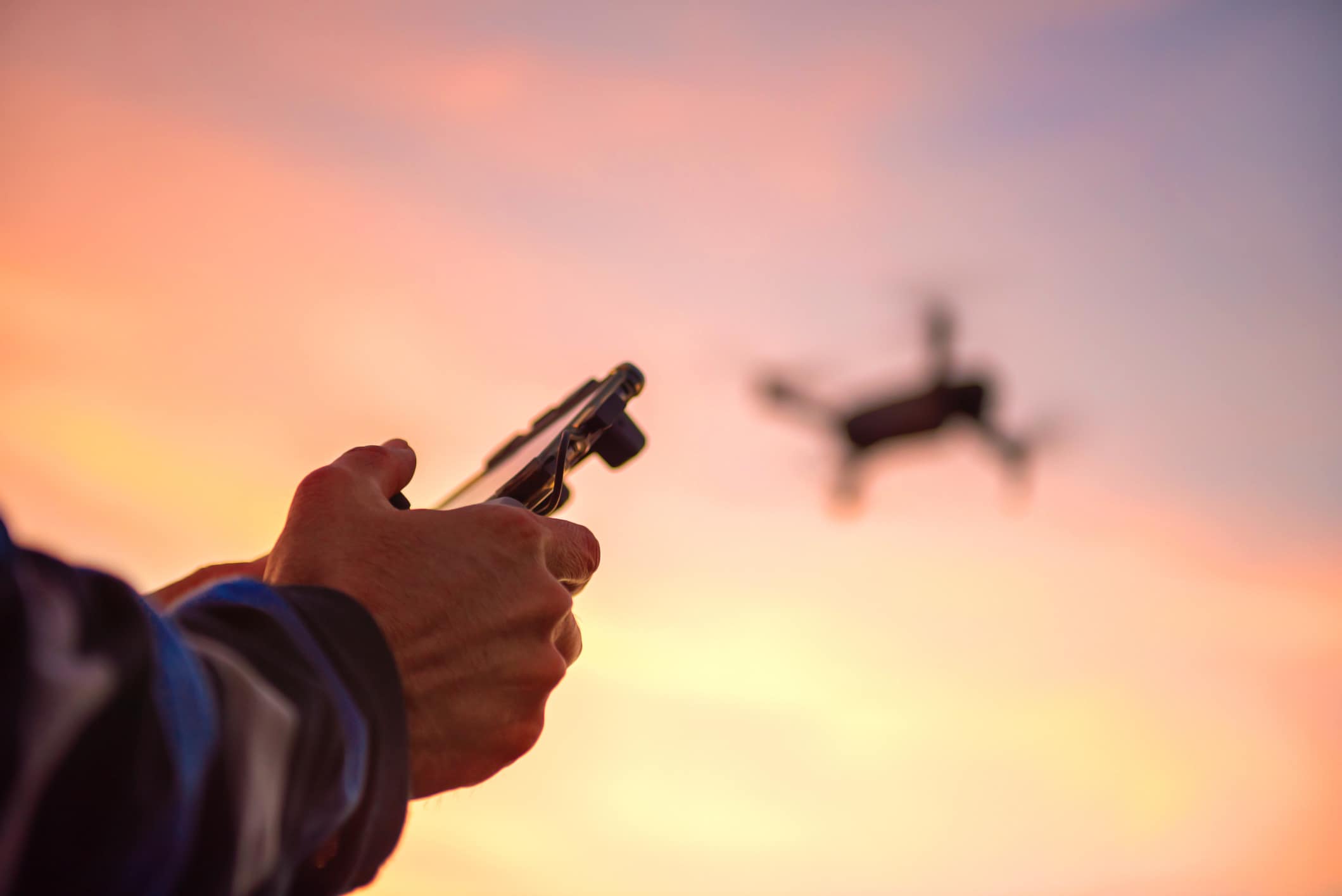FAA Study Led by Embry-Riddle Warns of Drone Risks to Aircraft

A nationwide analysis of drone activity led by researchers at Embry-Riddle Aeronautical University documents increasing growth in the use of drones and reveals “hot spots” where the risk of a mid-air collision with manned aircraft may be higher.
The study, which was conducted for the Federal Aviation Administration, provided critical information characterizing patterns of when and where small uncrewed aircraft systems (UAS) are flying — in order to assess and possibly mitigate any potential hazards associated with those patterns as drone use increases. Small UAS refer to drones weighing less than 55 pounds.
Among its observations, the report found that small UAS operators sometimes fly above the 400-foot ceiling established by the FAA for drone flight.
“Study data suggests that a sizable number of small UAS flights take place above that altitude, which could impact the operation of manned aircraft,” said Dr. Ryan Wallace, associate professor in the Aeronautical Science Department and principal investigator of the project.
Of 6,037 documented flights that had associated altitude information, at least 573 hit an altitude of between 400 and 500 feet, and at least 781 flew to 500 feet or above, according to the study.
Taking flight duration into account, the researchers calculated that drones flew in airspace typically used by manned aircraft about 10 percent of the total cumulative flying time that was observed. The data also suggested that flights above 500 feet were probably recreational, rather than commercial, based on the types of drones used. Some of the drones that flew above 400 feet may have still been operating with FAA approval — such as under a waiver or certificate of authorization — but the research did not discern those distinctions.

Aviation Ph.D. candidate and graduate research assistant Sang-A Lee briefs the research team about UAS sightings and registration data to help contextualize the research findings. (Photo: Embry-Riddle/David Massey)Heightened risk is also associated with small UAS flying near airports, especially heliports. Heliports are not noted on aeronautical charts, according to Wallace, and “are often hidden within urban sprawl.”
The researchers analyzed 43 aerodromes, meaning airports of all types. Small UAS were detected operating closest to heliports at distances within 0.5 nautical miles, about 3,000 feet.
Wallace said the report specifically recommends including heliport locations on aeronautical charts to make drone operators more aware of those locations.
Dr. Brent Terwilliger, associate professor in the Embry-Riddle Worldwide Department of Aeronautics and contributing researcher, said the most important part of the analysis was its creation of “a real-world, data-driven picture of how small UAS are actually being used in the National Airspace System,” adding that such information is “essential for shaping informed, practical policies and technologies that will enable safe, scalable integration of UAS as operations and autonomy continue to expand.”
Wallace said the commercial applications of drones — which are already used in crop monitoring, public safety, search and rescue, safety inspection and more — will expand. Also, changes in beyond-visual-line-of-sight rules — regarding flying drones beyond where a pilot or other observers can see them — are expected to increase the use of the uncrewed aircraft.
John Robbins, chair of the Department of Aeronautical Science, said the findings of the study will help uncrewed aviation to naturally evolve. “These researchers are truly paving a pathway into the world of tomorrow.”
Also involving researchers from Kansas State University and Wichita State University’s National Institute for Aviation Research, the study was conducted using sensors placed across the country that collected data from Remote Identification signals, which the FAA has required registered drones to transmit since 2023.
Wallace praised the FAA Remote ID policy. He said it was “bearing fruit by providing the FAA with important information on small UAS activity hot spots or areas of elevated risk” that can aid the agency in developing effective safety regulations.
Dr. Stephen Rice, a professor in the Human Factors and Behavioral Neurobiology Department who also participated in the research, said he was surprised by “the sheer number of drone flights operating near airports.”
Sang-A Lee, a Ph.D. candidate in Aviation who worked on the study, said it will “enhance the safety framework” for the operation of drones.
“This research helps inform both current policy gaps and future regulatory priorities,” Lee said.
Dr. Scott Winter, associate dean for research in the College of Aviation and a co-principal investigator on the project, called the research “groundbreaking.”
Winter said the study will enable “informed decision-making by industry and government.”

 Michaela Jarvis
Michaela Jarvis